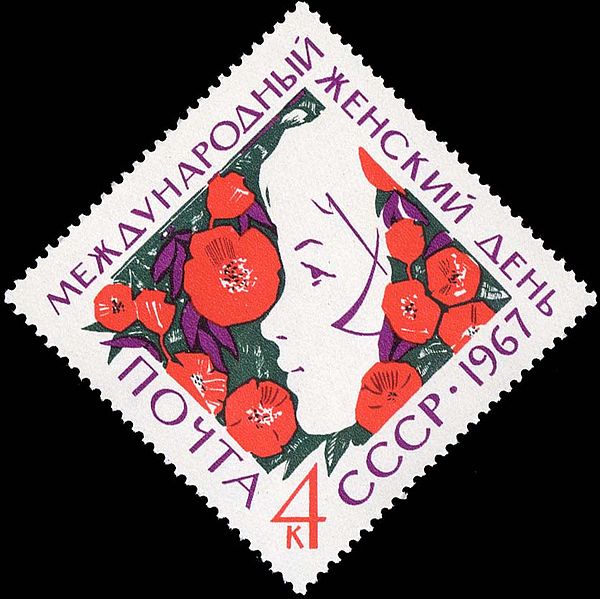Today, International Women’s Day is celebrated in many countries throughout the world as a day to recognize the cultural, political, and socioeconomic achievements of women. Its origin is closely linked to suffragist and labor movements in the early twentieth century in North America and Europe.

At SFCJL, our observance of International Women’s Day and Women’s History Month is part of our recent initiative to ground programming and activities in traditional Jewish values. In March, we are focusing on Eishet Chayil (Celebrating Women’s Voices). Throughout the month—on flyers posted across campus, blog posts, social media, and programming—we will be highlighting women whose lives and powerful voices have made an impact in our society.
Rooted as it is so deeply in modern Eastern European culture, International Women’s Day holds particularly special significance for the many residents of Russian and Ukrainian descent who are part of our SFCJL community. In addition to the International Women’s Day parties held throughout the Jewish Home & Rehab Center on March 8, there will be a special Women’s Day Music program and storytelling/reminiscences conversation groups for our Russian and Ukrainian-speaking residents.
The first observance of a Women’s Day was in New York on February 28, 1909, when the Socialist Party of America designated a day to commemorate a garment workers strike the year before. In August 1910, delegates from 17 countries attending an International Socialist Women’s Conference in Denmark proposed the establishment of an annual Women’s Day to promote equal rights. It was celebrated in Austria, Denmark, Germany, and Switzerland in 1911, and became an important day for pacifist protests during World War I. Over the next few years, several European countries established Women’s Day celebrations to honor the movement for women’s rights and to build support for achieving universal suffrage for women.

We have Russian women to thank for setting the date for what would become the internationally recognized holiday. On March 8, 1917, women textile workers in Petrograd began a “Bread and Peace” demonstration, demanding an end to World War I, to food shortages, and to autocratic rule in Russia. This marked the beginning of the February Revolution. Seven days later, Tsar Nicholas II abdicated, and the provisional government granted women the right to vote. Vladimir Lenin declared Women’s Day an official Soviet holiday after the October Revolution later that year.
In following years, Women’s Day spread to places like China and Cuba as an important day to recognize the contributions women have made both to family and the economy. It remained predominantly a communist holiday until roughly 1967, when it was taken up by second-wave feminists. In the 1970s and 1980s, women’s groups joined leftists and labor organizations in calling for equal pay, equal economic opportunity, equal legal rights, reproductive rights, subsidized childcare, and the prevention of violence against women. Eventually, countries in the West began to distance themselves from the holiday’s communist associations.

Today’s observance of International Women’s Day is largely guided by the United Nations. In 1975, during International Women’s Year, the UN observed International Women’s Day on March 8. Two years later, the United Nations General Assembly invited member states to proclaim March 8 as an official UN holiday for women’s rights and world peace. It has since been commemorated annually by the UN and much of the world, with each year’s observance centered on a particular theme or issue within women’s rights. In 2022, UN efforts are focused on advancing gender equality in the context of the climate crisis.
While not an official holiday in the U.S., recent years have seen an increased interest in celebrating International Women’s Day in this country. While somewhat co-opted by corporations working to commercialize its observance, its new-found popularity does reflect a contemporary iteration of women’s activism.
Honor the women in your life with a tribute donation to SFCJL.
Introducing Reese Barles

Reese Barles is one of seven San Francisco Unified School District high school interns that SFCJL is hosting this academic year. Reese is a senior at Mission High School and lives nearby with her family in the Excelsior District.
SFCJL & SFUSD partner together to provide meaningful work-based learning opportunities for high school students. Reese interns in our Life Enrichment Department and is gaining hands-on experience while supporting programs and activities that enrich the lives of SFCJL residents.
One special project Reese is working on is creating informative and interesting ‘readers’ about holidays for our Life Enrichment Department to use with residents. The readers help residents learn about the history of a holiday as well as the associated traditions and cultures. So far, Reese has created readers for New Year’s Day, Martin Luther King Day, Black History Month, Lunar New Year, and Women’s History Month. She is currently working on one for Earth Day.



